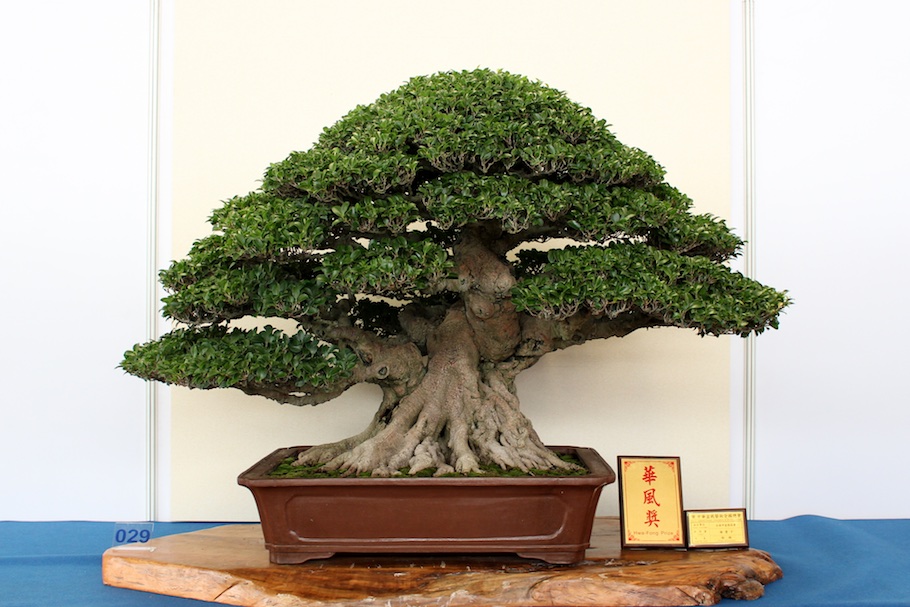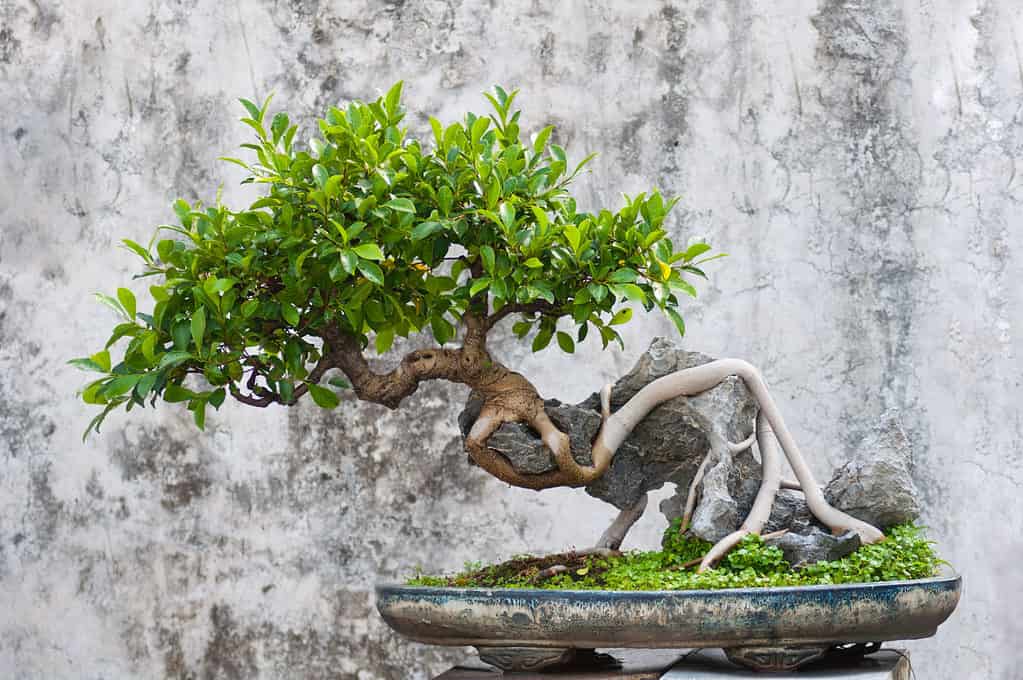In this article, we will explore the fascinating world of Ficus Bonsai and the various types that exist. From the popular Ficus Microcarpa to the elegant Ficus Ginseng, we will learn how to properly care for these miniature trees and meet their unique needs.
Whether you are wondering about the sunlight requirements for a ficus bonsai or how to braid a mature ficus tree, we have you covered. Join us as we delve into the world of Ficus Bonsai and uncover the secrets behind their stunning beauty and intricately designed forms.
Ficus Bonsai Types
When it comes to bonsai trees, one of the most popular and widely loved species is the Ficus. Ficus bonsai trees are known for their beautiful foliage, intricate root systems, and the ability to thrive both indoors and outdoors. In this article, we will explore the various types of Ficus bonsai trees and provide detailed information on their descriptions, preferred growing conditions, and care tips.
Ficus Ginseng
The first type of Ficus bonsai we will discuss is the Ficus Ginseng. This particular variety is characterized by its unique and distinctive root system, which resembles a tangled network of exposed roots. The word “Ginseng” refers to the root-like appearance of the exposed root system, resembling the Ginseng plant.
Description of Ficus Ginseng: Ficus Ginseng bonsai trees have thick, bulbous trunks and shiny, dark green leaves. The roots, which often serve as a focal point, have a natural and artistic appeal, making them a popular choice among bonsai enthusiasts.
Preferred Growing Conditions: Ficus Ginseng bonsai trees thrive in warm and humid climates. They prefer bright, indirect sunlight and should be protected from cold temperatures. It is recommended to keep them in a well-draining soil mix and water them regularly to ensure the soil remains consistently moist.
Care Tips for Ficus Ginseng Bonsai: To care for a Ficus Ginseng bonsai tree, it is important to prune the branches regularly to maintain its desired shape. Additionally, it is recommended to repot the tree every two to three years to promote healthy root growth. Ficus Ginseng bonsai trees should also be fertilized during the growing season to support their overall health and vitality.
Ficus Retusa
Next on our list is the Ficus Retusa, also known as the “Banyan Fig.” This particular bonsai tree is renowned for its aerial roots, which hang downwards from the branches and give it a majestic and captivating appearance.
Description of Ficus Retusa: Ficus Retusa bonsai trees possess small, shiny leaves and a compact, dense canopy. The aerial roots add an element of intrigue and make it a popular choice for bonsai enthusiasts seeking an artistic and natural-looking tree.
Preferred Growing Conditions: Ficus Retusa bonsai trees thrive in warm, tropical climates and require plenty of bright, indirect sunlight. They should be protected from cold drafts and harsh temperatures. It is important to provide them with a well-draining soil mix and water them regularly to maintain sufficient moisture.
Care Tips for Ficus Retusa Bonsai: Proper pruning is essential to maintain the desired shape and structure of Ficus Retusa bonsai trees. Wiring can also be used to guide the growth of the branches and aerial roots. Regularly removing any dead or damaged branches is important for the overall health and aesthetics of the tree. Additionally, Ficus Retusa bonsai trees benefit from occasional misting to promote humidity and prevent the aerial roots from drying out.

Ficus Benjamina
Moving on, let’s explore the Ficus Benjamina, also known as the “Weeping Fig” or “Benjamin Fig.” This particular species is cherished for its elegant, drooping foliage and graceful branches.
Description of Ficus Benjamina: Ficus Benjamina bonsai trees feature glossy, elliptical leaves that cascade downwards, creating a weeping and tranquil appearance. The branches have a graceful curvature, adding to the tree’s overall elegance.
Preferred Growing Conditions: Ficus Benjamina bonsai trees prefer bright, indirect sunlight but can tolerate some shade. They thrive in temperatures that range from 60 to 75 degrees Fahrenheit (15 to 24 degrees Celsius). It is important to provide them with well-draining soil and water them thoroughly, allowing the top inch of soil to dry out before watering again.
Care Tips for Ficus Benjamina Bonsai: Pruning is crucial for maintaining the desired shape and promoting the tree’s overall health. Ficus Benjamina bonsai trees are also prone to leaf drop, so it is important to ensure they are not exposed to cold drafts or sudden temperature changes. Regularly dusting the leaves and misting the tree can help prevent dust accumulation and maintain humidity levels.
Ficus Microcarpa
Now, let’s delve into the world of Ficus Microcarpa, commonly known as the “Chinese Banyan” or “Indian Laurel.” This particular bonsai tree is highly versatile and adaptable, making it a popular choice among bonsai enthusiasts.
Description of Ficus Microcarpa: Ficus Microcarpa bonsai trees have small, glossy leaves that grow densely, creating a lush and vibrant canopy. The branches often exhibit a gnarled and twisted appearance, adding to the tree’s overall charm.
Preferred Growing Conditions: Ficus Microcarpa bonsai trees thrive in warm, tropical climates and require ample bright, indirect sunlight. They can tolerate some shade, but prolonged exposure to low light levels can result in leggy growth. It is important to provide them with a well-draining soil mix and water them regularly, allowing the top inch of soil to dry out between waterings.
Care Tips for Ficus Microcarpa Bonsai: Regular pruning and wiring are essential for maintaining the desired shape and structure of Ficus Microcarpa bonsai trees. These trees are fast-growing, so pruning should be done frequently to prevent them from becoming overgrown. Applying a slow-release fertilizer during the growing season can promote healthy growth and vibrant foliage.

Ficus Banyan
Continuing our exploration, we now come to the Ficus Banyan, which is widely revered for its aerial roots and immense presence.
Description of Ficus Banyan: Ficus Banyan bonsai trees possess large, heart-shaped leaves and an extensive root system that often creates a captivating and awe-inspiring canopy. The aerial roots grow downwards, adding a unique and artistic element to the tree.
Preferred Growing Conditions: Ficus Banyan bonsai trees thrive in warm and humid climates. They require bright, indirect sunlight to ensure optimal growth. It is important to provide them with a well-draining soil mix and water them consistently to maintain sufficient moisture levels.
Care Tips for Ficus Banyan Bonsai: Regular pruning is essential for shaping and maintaining the size of Ficus Banyan bonsai trees. Wiring can also be used to guide the growth of the branches and aerial roots. These trees benefit from occasional misting to promote humidity levels and prevent the aerial roots from drying out.
Ficus Cascade
Next, let’s explore the Ficus Cascade, renowned for its cascading branches and graceful appearance.
Description of Ficus Cascade: Ficus Cascade bonsai trees feature long, cascading branches that create a beautiful and flowing silhouette. The leaves are small and dense, adding to the overall elegance of the tree.
Preferred Growing Conditions: Ficus Cascade bonsai trees thrive in warm and humid climates. They require bright, indirect sunlight and should be protected from cold drafts. It is important to provide them with a well-draining soil mix and water them regularly to ensure the soil remains consistently moist.
Care Tips for Ficus Cascade Bonsai: Regular pruning is crucial for maintaining the desired shape and preventing the branches from becoming tangled or overgrown. Wiring can be used to guide the growth and create the cascading effect. These trees benefit from occasional misting to maintain humidity levels and prevent the leaves from drying out.

Ficus Tiger Bark
Moving on, let’s explore the striking Ficus Tiger Bark bonsai tree, known for its distinctive and captivating bark pattern.
Description of Ficus Tiger Bark: Ficus Tiger Bark bonsai trees have rough, textured bark that exhibits a unique and striking tiger-like pattern. The leaves are small and oval-shaped, creating a delicate and harmonious balance with the bark’s texture.
Preferred Growing Conditions: Ficus Tiger Bark bonsai trees thrive in warm climates and require bright, indirect sunlight. They can tolerate some shade but will not thrive in low light conditions. It is important to provide them with well-draining soil and water them regularly, ensuring the soil remains consistently moist.
Care Tips for Ficus Tiger Bark Bonsai: Regular pruning is essential for maintaining the desired shape and preventing the branches from becoming too dense. It is also important to keep an eye out for any signs of pests or diseases, as the textured bark can provide hiding spots. Applying a balanced fertilizer during the growing season can support healthy growth and vibrant foliage.
Ficus Vietnamese
Continuing our exploration, we now come to the Ficus Vietnamese, a beautiful and delicate bonsai tree with a rich cultural history.
Description of Ficus Vietnamese: Ficus Vietnamese bonsai trees have small, oval-shaped leaves that create a dense and vibrant canopy. The branches often exhibit an elegant and flowing curvature, adding to the tree’s overall aesthetic appeal.
Preferred Growing Conditions: Ficus Vietnamese bonsai trees thrive in warm and tropical climates. They require bright, indirect sunlight and should be protected from cold temperatures. It is important to provide them with well-draining soil and water them regularly to maintain sufficient moisture levels.
Care Tips for Ficus Vietnamese Bonsai: Regular pruning is essential for maintaining the desired shape and structure of Ficus Vietnamese bonsai trees. Wiring can also be used to guide the growth and create the desired aesthetics. Providing occasional misting can help maintain humidity levels and prevent the leaves from drying out.

Ficus Windswept
Last but not least, we come to the Ficus Windswept, a bonsai tree that invokes the beauty and power of nature.
Description of Ficus Windswept: Ficus Windswept bonsai trees have curved and twisted trunks, giving the illusion of a tree that has been shaped by strong winds. The branches often exhibit a dramatic and asymmetrical growth pattern, adding to the tree’s overall sense of movement and strength.
Preferred Growing Conditions: Ficus Windswept bonsai trees thrive in warm climates and require bright, indirect sunlight. They can tolerate moderate shade but should not be kept in low-light conditions. It is important to provide them with well-draining soil and water them regularly, allowing the top inch of soil to dry out between waterings.
Care Tips for Ficus Windswept Bonsai: Regular pruning and wiring are essential for maintaining the desired shape and structure of Ficus Windswept bonsai trees. These trees benefit from occasional misting to maintain humidity levels and prevent the leaves from drying out. Additionally, it is important to check the wiring regularly to prevent it from cutting into the branches as they grow.
In conclusion, the world of Ficus bonsai trees offers a wide variety of options to bonsai enthusiasts, each with its own unique characteristics and beauty. Whether you choose the Ficus Ginseng with its distinctive root system, the Ficus Retusa with its aerial roots, or any other variety, caring for these bonsai trees requires attention to their preferred growing conditions and regular maintenance. By understanding the specific needs of each type of Ficus bonsai and providing the necessary care, you can cultivate and enjoy these stunning trees for years to come.


